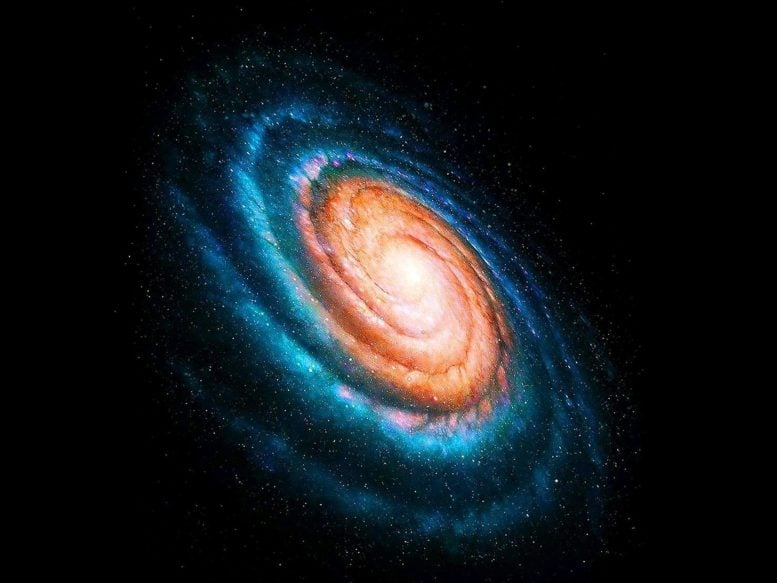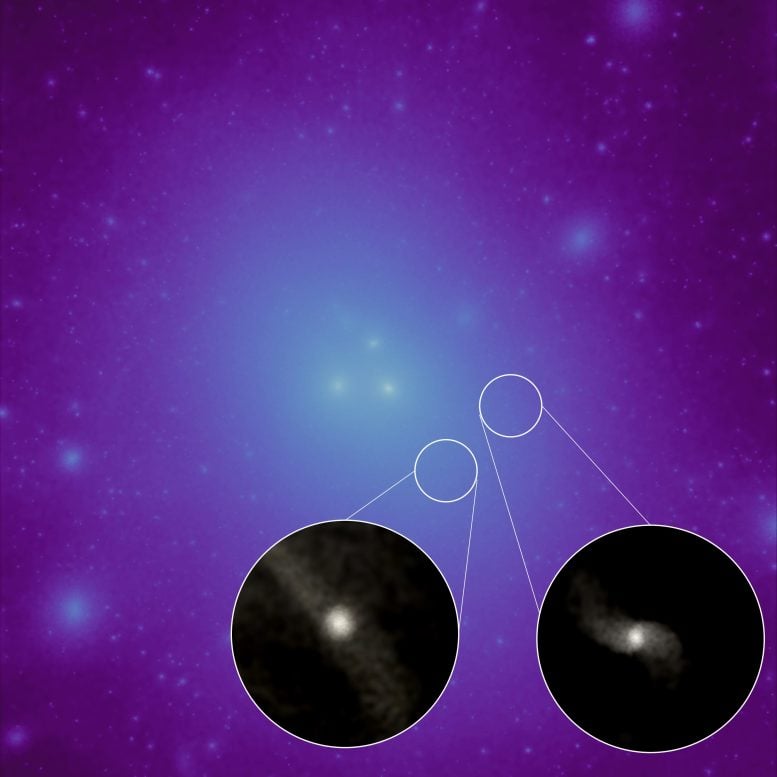“Lucky Find” by Astrophysicists Explains How Galaxies Can Exist Without Dark Matter

In simulations, collisions cause smaller star groupings to lose material.
In a new Nature Astronomy study, an international team led by astrophysicists from the University of California, Irvine, and Pomona College report how, when tiny galaxies collide with bigger ones, the bigger galaxies can strip the smaller galaxies of their dark matter — matter that we can’t see directly, but which astrophysicists think must exist because, without its gravitational effects, they couldn’t explain things like the motions of a galaxy’s stars.
It’s a mechanism that has the potential to explain how galaxies might be able to exist without dark matter – something once thought impossible.
It started in 2018 when astrophysicists Shany Danieli and Pieter van Dokkum of 
Dark matter distribution in a simulated galaxy group, with brighter areas showing higher concentrations of dark matter. Circles show close-up images of the stellar light associated with two galaxies lacking dark matter. If these galaxies had dark matter, they would appear as bright regions in the main image. Credit:Morena et al.
“It’s been established for the last 40 years that galaxies have dark matter,” said Jorge Moreno, an astronomy professor at Pomona College, who’s the lead author of the new paper. “In particular, low-mass galaxies tend to have significantly higher dark matter fractions, making Danieli’s finding quite surprising. For many of us, this meant that our current understanding of how dark matter helps galaxies grow needed an urgent revision.”
The team ran computer models that simulated the evolution of a chunk of the universe – one about 60 million light years across – starting soon after the DOI: 10.1038/s41550-021-01598-4
Funding for the work came from the National Science Foundation, sabbatical leave support for Moreno from Pomona College and the Harry and Grace Steele Foundation, and, for Danieli, from
(function(d, s, id){
var js, fjs = d.getElementsByTagName(s)[0];
if (d.getElementById(id)) return;
js = d.createElement(s); js.id = id;
js.src = "https://connect.facebook.net/en_US/sdk.js#xfbml=1&version=v2.6";
fjs.parentNode.insertBefore(js, fjs);
}(document, 'script', 'facebook-jssdk'));
Read More: “Lucky Find” by Astrophysicists Explains How Galaxies Can Exist Without Dark Matter

